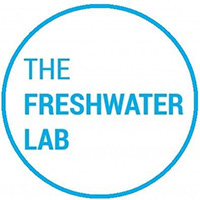While the ecological and economic problems the carp pose are legitimate, dubbing the fish Asian carp racializes the issue. It clouds the thinking of Rust Belt folk primed to believe their economic woes are caused by Asian economies. Rather than perpetuate the racialized rhetoric that justifies militarized solutions like a costly checkpoint for carp, we can take actions that demilitarize our sacred streams. A more holistic river to table approach is underway.
Fish provide an important protein source for many humans. Bighead and Silver carp are particularly high in coveted Omega-3s while having low mercury levels. One of the ways we can move away from harmful metaphors toward symbols that heal the watershed is to call carp food. Some folks already embrace carp as food.
The Illinois Department of Natural Resources (IDNR) heard the call and launched a number of programs to turn carp into valuable products. By paying fishermen for their time and allowing them individual profit from their haul, IDNR made netting carp a lucrative prospect. Between 2010 and 2017, the program pulled 5.5 million pounds of carp from the upper Illinois River. Building on this success, a new threshold aimed to remove 1 million pounds a year from the upper Illinois and 15 million pounds from its lower span. In 2020, 2.9 million pounds of carp were removed from the Illinois River and directed to a new processing plant on its banks. Through September 2021, fishermen caught an additional 2.5 million pounds.
In the summer of 2021, many of the carp-curious signed up for an IDNR zoom event to give a new name to the reviled Asian carp. Inspired by earlier seafood name changes like slimehead to orange roughy, or Patagonian toothfish to Chilean sea bass, the move aimed to open markets for the increasingly carp-laden nets of Illinois fishermen. After some delay and onboarding a Chicago brand company, the rollout of Copi, a name focused on the copiousness of the fish and their nutritional benefits, happened in June 2022.
Members of the Freshwater Lab had a chance to taste the fish in its pre-Copi days at a fall 2019 banquet held at Southern Illinois University’s Touch of Nature lodge. The “Asian Carp Convivial” formed part of artists Sarah Lewison and Andrew S. Yang’s project centered on what they call “a Postnatural Fish.” Lewison and Yang also created billboards that read “Eat the River, Heal the River (Asian Carp: Nutritious and Hecka Delicious)” and declared them a “Midwest Superfood.” In a campers’ hall in the forest, tables were lined with original Lewison and Yang fishtory placemats and boisterous folk having their first taste of the infamous fish.
The filets that we folded into tacos had been prepared by Fin Fishery, a Kentucky based company whose owners produce a range of products from carp. They see the sudden influx of fish as offering people a chance to enjoy catch from the wild. Eating Copi helps to heal rivers overrun by channels of commodity exchange that have depleted their ecosystems. In the spirit of healing, the fishery also hires formerly incarcerated people to process the fish and make the products, giving them a second chance where other businesses close the door. Adaptive orientations like these can help people across the globe learn to harvest what their rivers yield and promote their restoration.


